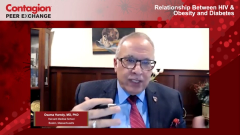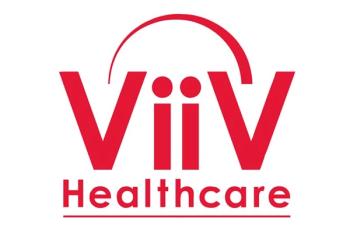
Three-Drug Regimen as Treatment for HIV Infections
A discussion regarding the safety profile and use of bictegravir/emtricitabine/tenofovir alafenamide as treatment for HIV.
Episodes in this series

Grace McComsey, MD, FIDSA: Todd, we talked about integrase inhibitors, about weight gain. Bictegravir with TAF [tenofovir alafenamide] FDC [fixed-dose combination], or Biktarvy, it is obviously a very effective regimen. It’s safe overall. Tell us a little bit about how much we know about the effect on weight gain. Is it really the worst integrase inhibitor out there, and how bad is it vs the other agents in that class?
Todd Brown, MD, PhD: Bictegravir, and the combination regimen with Biktarvy, is obviously super effective as you mentioned for treating HIV, and so we can’t take our eye off the ball there. That’s the key thing. But there is more weight gain compared to an efavirenz-based regimen. Among the other integrase inhibitors, it looks pretty similar to dolutegravir, they’re pretty much indistinguishable. Compared to elvitegravir, which is boosted, it probably has more weight gain associated with it, and a little more than raltegravir, at least from the observational studies. Of the integrase inhibitors, the ones that are used the most, bictegravir and dolutegravir are the ones that are associated with the most weight gain and have other advantages in terms of tolerability. You’re balancing things. On the NRTI [nucleoside reverse transcriptase inhibitors] side; and most of these switches are either from abacavir to the TAF [tenofovir alafenamide] component, or from TDF [tenofovir disoproxil fumarate] to the TAF [tenofovir alafenamide] component, there is weight gain that is independent of the integrase effects.
As a combination, it is associated with weight gain. And as John mentioned, there’s huge heterogeneity as to who is going to be gaining weight. That’s something that we need to get a handle on. This is what we saw early on with lipohypertrophy and lipoatrophy, that some people could be exposed to stavudine and not have too many effects at all, and other people would have very severe lipoatrophy. The issue is trying to understand what are the factors that are associated with this adverse effect and how to potentially channel those people into a different regimen. Then the obvious question of which regimen do you channel them to? But finding risk factors for the weight gain is important, whether that be genetic markers or biomarkers of early response. This is a really critical question in the field.
Grace McComsey, MD, FIDSA: Some of the most fascinating data are the difference by sex and race. Females, African Americans, seem to have it worse in terms of weight gain.
Thank you for watching this ContagionLive® Peer Exchange. If you enjoyed the content, please subscribe to the e-newsletter so you can receive upcoming Peer Exchanges and other great content. Thank you for listening.
Transcript Edited for Clarity
Newsletter
Stay ahead of emerging infectious disease threats with expert insights and breaking research. Subscribe now to get updates delivered straight to your inbox.














































































































































































































































































































